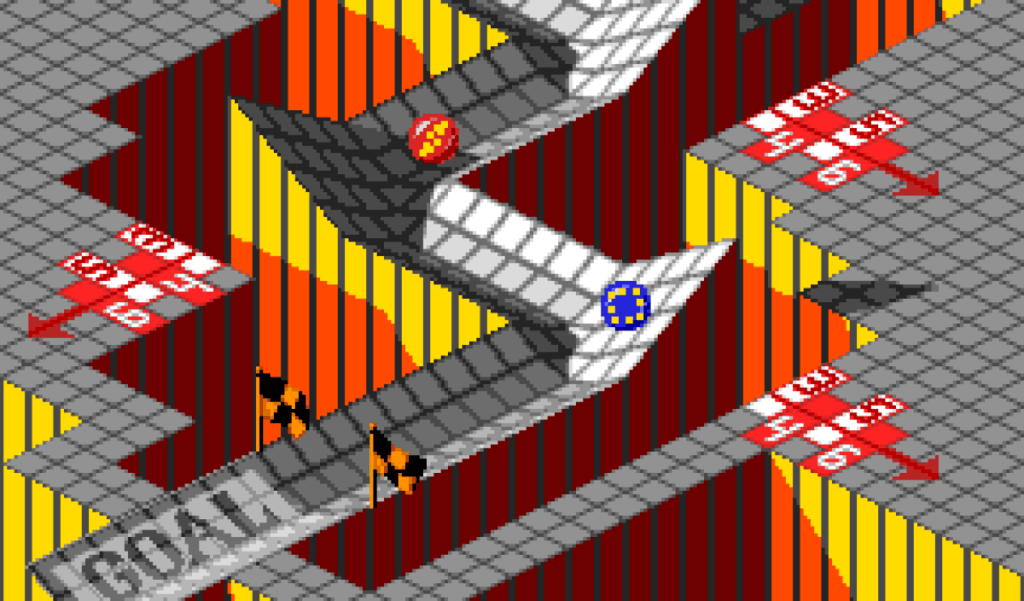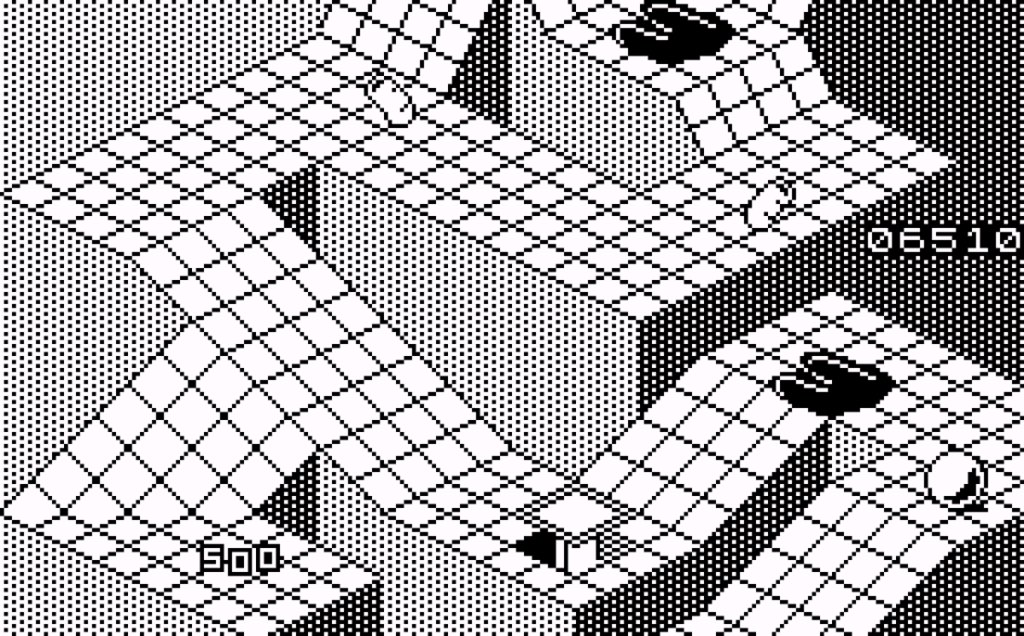Unlock the secrets of Marble Madness, the iconic arcade game that rolled its way into our hearts in 1984. Discover the genre, gameplay, key features, strategies, and more.
In the annals of video game history, there are classics that have etched their names in stone, and then there’s “Marble Madness.” Released in 1984 by Atari Games, this arcade sensation offered players a unique and unforgettable gaming experience. With its innovative gameplay, captivating visuals, and the challenge of navigating a marble through treacherous landscapes, Marble Madness left an indelible mark on both the gaming industry and popular culture.
Let’s dive deep into the world of Marble Madness, exploring its genre, platforms, gameplay, key features, strategies, reviews, cultural impact, sequels, and similar games.
Marble Madness: The Genre-Defying Classic
Genre: Arcade
Marble Madness defies easy categorization. It is often described as an arcade game, and rightfully so, as it was originally released in arcades. However, its gameplay doesn’t fit neatly into traditional arcade genres like shooters or beat ’em ups. Instead, Marble Madness falls into a subgenre of its own, often referred to as a “marble maze” game. In this genre, players control a marble and navigate it through intricate, obstacle-filled courses.
Platforms Galore: Where Marble Madness Rolled
Marble Madness initially rolled onto the arcade scene in 1984, captivating players with its innovative gameplay. However, its popularity didn’t stop there. The game was subsequently released on various platforms, ensuring that players could experience the thrill of navigating a marble through challenging courses from the comfort of their homes. Here are some of the platforms Marble Madness graced:
- Arcade: The game’s birthplace, where players first encountered its unique gameplay.
- Nintendo Entertainment System (NES): In 1986, Marble Madness made its way to the NES, bringing the arcade experience to living rooms across the globe.
- Commodore 64: Owners of this iconic home computer system could also enjoy the game in 1986.
- Atari ST and Amiga: Marble Madness rolled onto these personal computer systems in 1986 as well, captivating players with its challenging courses.
- Sega Genesis: In 1992, Sega Genesis players got their turn to test their marble-rolling skills.
The availability of Marble Madness on these platforms ensured that players of all stripes could get in on the action, contributing to its enduring legacy.

Marble Madness Gameplay: Rolling Into the Unknown
At its core, Marble Madness is a game of skill and precision. Players take control of a marble and must guide it through a series of intricate and perilous 3D courses while racing against the clock. The gameplay is deceptively simple but devilishly challenging. Here’s what you need to know about Marble Madness gameplay:
- Controls: Players use a trackball or a joystick to navigate the marble. The controls are incredibly responsive, allowing for precise movements as you roll your marble through the maze.
- Courses: Marble Madness features six unique courses, each with its own set of obstacles and challenges. From narrow bridges to moving platforms, players must master each course’s quirks to progress.
- Enemies: In addition to the challenging terrain, players must also contend with a variety of enemies, including the infamous Black Marble. Touching an enemy or falling off the course can cost precious seconds.
- Time Limit: Marble Madness is all about speed. Players have a limited amount of time to complete each course, adding an element of urgency to the gameplay.
- Multiplayer: In the arcade version, two players could compete head-to-head, adding a competitive edge to the experience.

Key Gameplay Features: What Sets Marble Madness Apart
Marble Madness was a trailblazer in many ways, introducing several key gameplay features that set it apart from other games of its era:
- Isometric Perspective: Marble Madness was one of the first games to use an isometric perspective, giving players a 3D-like view of the action. This perspective added depth and immersion to the gameplay.
- Realistic Physics: The game’s physics engine was ahead of its time. The marble’s movement felt incredibly realistic, making every tilt and roll a tactile and engaging experience.
- Time Pressure: Marble Madness introduced the concept of racing against the clock in an arcade game, adding an element of tension and excitement to the gameplay.
- Unique Courses: Each course in Marble Madness was a masterclass in level design, with distinct challenges that required different strategies to conquer.
- Multiplayer: The arcade version’s multiplayer mode allowed players to compete against each other in real-time, adding a layer of competitiveness to the game.
Strategies and Cheats: Mastering the Marble
Becoming a Marble Madness master requires a combination of skill, strategy, and a bit of insider knowledge. Here are some tips and tricks to help you navigate those treacherous courses:
- Practice Makes Perfect: Marble Madness is all about precision, so practice your movements to become familiar with the marble’s physics.
- Learn Each Course: Each course presents unique challenges. Take the time to learn the layout and develop strategies for tackling obstacles.
- Use the Clock Wisely: Time is your enemy in Marble Madness. Plan your route to minimize time wasted, and avoid unnecessary risks.
- Beware of Enemies: Enemies can be a significant hindrance. Learn their patterns and find ways to avoid or outmaneuver them.
- Play with a Friend: In the arcade version, competing against a friend can be a fun and motivating way to improve your skills.

As for cheats, Marble Madness has a few well-known ones:
- Infinite Time: Some versions of the game allow you to input a code for unlimited time, making the game considerably easier.
- Skip Levels: There are cheat codes that let you skip to higher levels, bypassing the need to complete earlier stages.
While cheats can provide a shortcut to success, many players find that the real satisfaction comes from mastering the game through skill and practice.
Reviews and Cultural Impact: Rolling Through the Ages
Upon its release, Marble Madness received critical acclaim for its innovative gameplay, unique perspective, and challenging level design. Players were captivated by the game’s intuitive controls and the thrill of rolling a marble through intricate courses. Its popularity in arcades and subsequent home releases cemented its status as a classic.
The game’s impact extended beyond the gaming community. Marble Madness became a cultural touchstone, referenced in various forms of media. It appeared in movies, TV shows, and even inspired elements of other games. Its influence on the gaming industry can still be seen in modern games that incorporate physics-based puzzles and isometric perspectives.
Sequels and Spin-offs: The Marble Legacy Continues
Marble Madness left an enduring legacy, inspiring sequels and spin-offs that aimed to capture the magic of the original. While none could quite replicate the unique charm of the 1984 classic, they added their own twists to the marble-rolling formula:
- Marble Blast Gold (2002): This PC game embraced the Marble Madness spirit, offering players a new set of challenging levels and a multiplayer mode.
- Super Monkey Ball (2001): While not a direct successor, Super Monkey Ball shares the concept of navigating a ball through obstacle courses, drawing inspiration from Marble Madness.
- Spectraball (2008): A PC game that combined elements of Marble Madness with a futuristic aesthetic and a focus on physics-based puzzles.
- Rock of Ages (2011): This game blended the marble-rolling concept with tower defense, creating a unique and quirky gaming experience.
Similar Games: Rolling in Good Company
If you’re a fan of Marble Madness and looking for similar games to test your marble-rolling skills, you’re in luck. Several games offer a comparable experience:
- Kororinpa: Marble Mania (2006): This Nintendo Wii game tasks players with navigating marbles through intricate mazes, utilizing the motion controls of the Wii Remote.
- Marble It Up! (2018): Available on multiple platforms, this game captures the spirit of Marble Madness with its challenging courses and precise controls.
- Lumo (2016): While not a marble game per se, Lumo features isometric puzzle-solving in a similar vein to Marble Madness, appealing to fans of the genre.
- Tilt to Live (2010): A mobile game that channels the spirit of Marble Madness by having players navigate a small arrow through obstacle-filled levels using tilt controls.
Marble Madness
Marble Madness, the groundbreaking arcade sensation of 1984, remains a beloved classic in the world of video games. Its innovative gameplay, realistic physics, and challenging courses have left an indelible mark on both the gaming industry and popular culture.
With its enduring legacy, including sequels and games inspired by its concept, Marble Madness continues to roll its way into the hearts of gamers old and new, proving that even a humble marble can be the star of the show in the world of gaming. So, are you ready to take on the marble maze and see if you have what it takes to conquer Marble Madness?
- Marble Madness on MobyGames: MobyGames offers a comprehensive overview of Marble Madness, including details about its development, release on different platforms, and user reviews.
- Marble Madness – The Cutting Room Floor: The Cutting Room Floor is a community-driven website that explores hidden content and unused elements in video games. This page delves into the secrets and unused content in Marble Madness.
- Marble Madness – Arcade Museum: The Arcade Museum offers historical information about the arcade version of Marble Madness, including details about its cabinet and gameplay.

